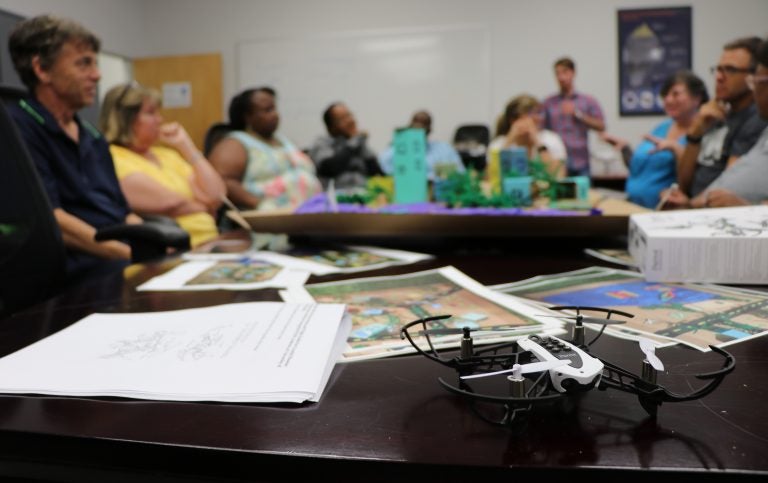University of Central Florida professors of geographic information systems and biology teamed up Wednesday to take GIS technology and drones into Florida classrooms for 5th grade through high school.
In the geospatial technology training workshop for Florida teachers, 14 teachers were shown customizable lesson plans that use GIS, mapping and drone technologies. Tim Hawthorne, GIS assistant professor in the department of sociology, along with Linda Walters, biology professor, and a team of students developed the lesson plans to meet Florida teaching standards. A bonus: It was free for the teachers.
“We provide these services for free to stimulate an interest in GIS and science,” Hawthorne said. The goal is more students will consider GIS – an in-demand skillset – as a career option.
The lesson plans use UCF-created mobile applications that compile data and show students ways GIS is used in real-world applications.
For instance, a lesson plan has students map out areas of their campus they feel connected to the most. Their data compiled then shows areas with the highest emotional connectivity, which can, in turn, be used to guide where greater trash clean-up efforts on campus should go, Walters said.
The hope is that by showing students how GIS can impact their own school grounds, students can better understand how it is used in larger real-world scenarios. For instance, GIS is used by Hawthorne and a team of students to map areas of high-emotional connectivity on Florida’s coast. The data is then used by Walters and her team to help guide coastal-restoration efforts.
Workshop participants also were shown a lesson plan that incorporates a drone. Using an inexpensive cardboard model of a coast, the drone was flown over the model and captured pictures. The model was then hit by a simulated natural disaster, and the drone flew over again to capture images of the damage. Drones are used in this same way to help scientists study eroding coast lines, assess damage after natural disasters and more.
“Drones are becoming more affordable, which allows us the opportunity to use them with students and as a tool for science,” Hawthorne said.
Teachers were excited about the prospect of drones in their lesson plans because it offers an exciting, hands-on learning experience for their students.
Candice Brown, a chemistry and environmental-management teacher at Everglades High School, said a drone could add value to one of her existing lesson plans. In this lesson, students make a model of a city, then using a fan, Brown applies high-speed winds to see which model is the strongest. Students could fly a drone over the model to capture images of pre-and-post-damage and use those images to estimate the cost of damage.
“These are important tools to show kids at a young age career options out there,” Brown said. “Public planning, disaster relief, environmental management – it could be invaluable to show how drones apply to these careers that kids may not know about.”
Teachers were sent home from the workshop with their own drone and copies of the lesson plans that were introduced to them. Plus, Hawthorne, Walters and a team of students have offered their time in the fall semester to go to the teachers’ schools to help facilitate the lesson plans.
The workshop and resources are supported by a National Science Foundation grant that Walters, Hawthorne and co-principal investigators Fernando Rivera, Lisa Chambers and Kelly Kibler – all UCF faculty – earned last year.
The team intends to host more workshops at UCF for teachers next semester, said Hawthorne, who added the first workshop in Research Park this week had a long wait list.
In all, providing teachers with more resources and helping cultivate the next generation of scientists is “a win-win,” Walters said.
